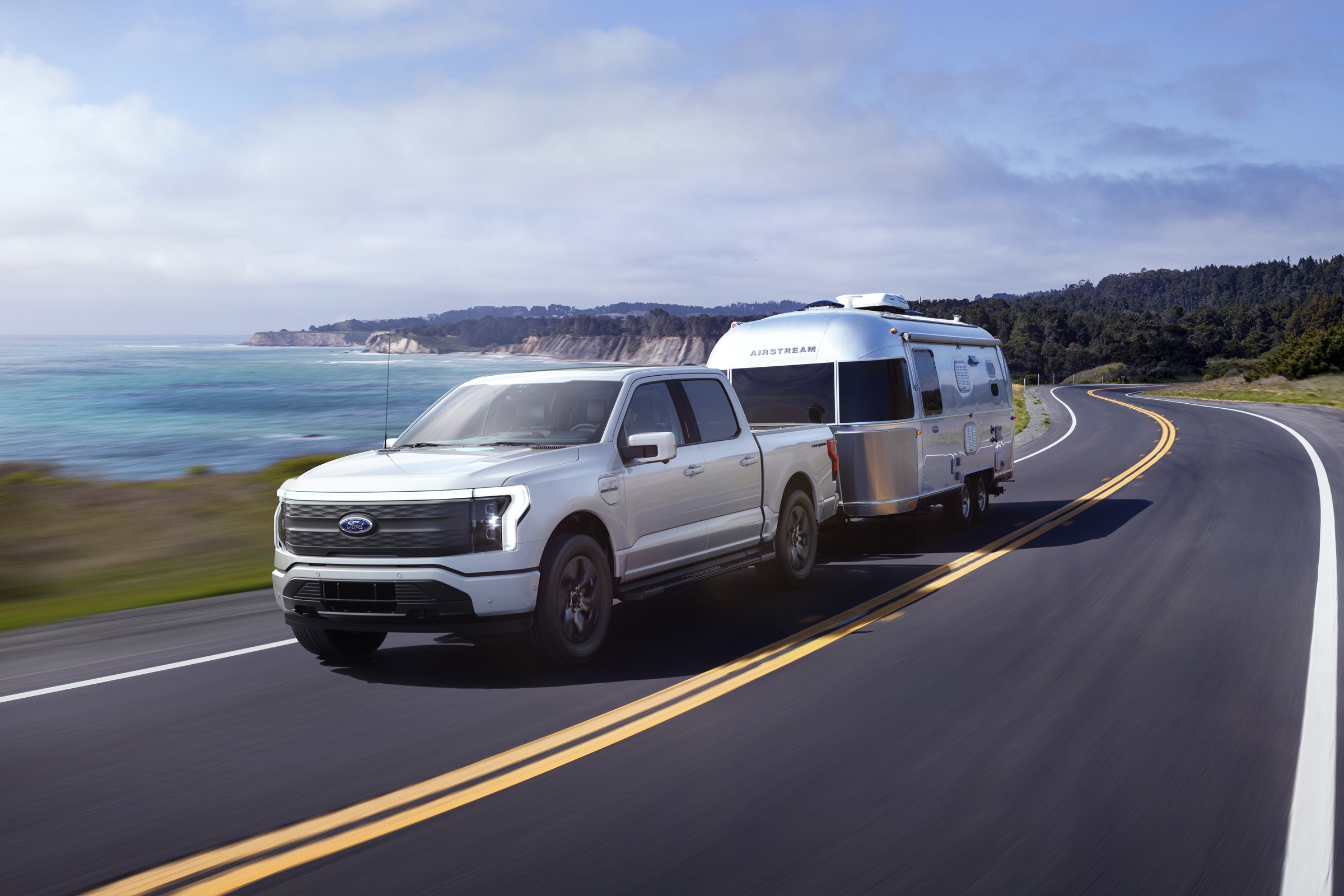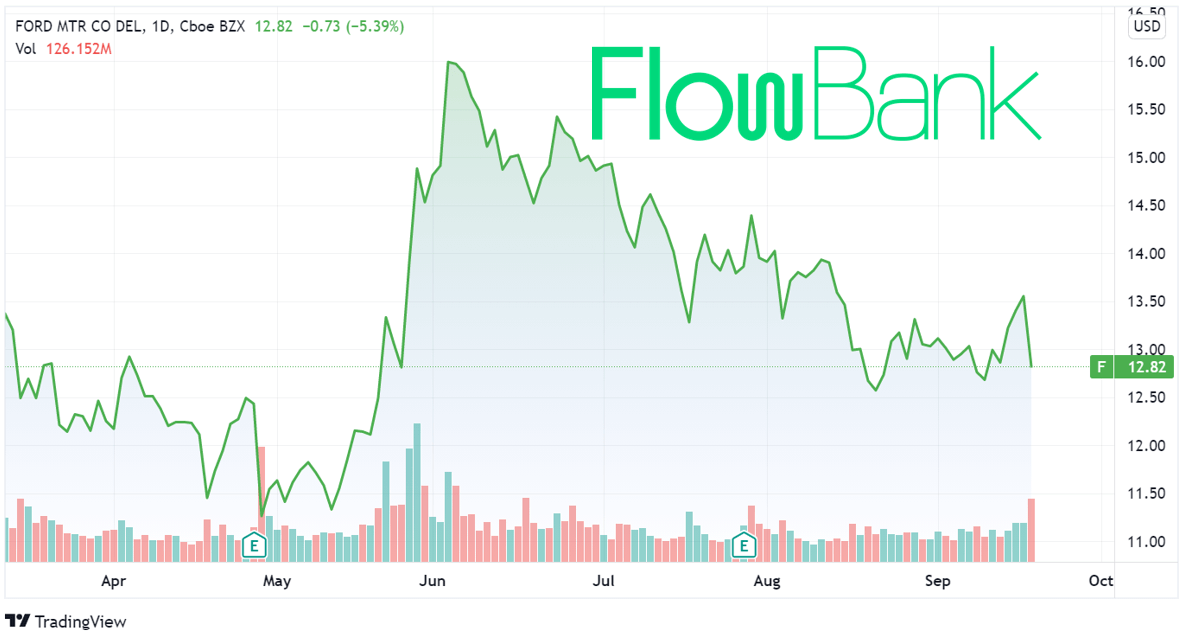“This sucker’s quick” said Joe Biden when he drove a prototype of the new Ford vehicle. While Ford has not yet delivered one single F-150 Lightening – its all-electric pick-up truck – to the market, it is already doubling its production capacity.
What’s happening?
Under the pressure of a rising demand for its new F-150 Lightning, Ford said last week that it will be adding capacity to increase their production: $250 million for 450 new jobs created to satisfy the 2022 demand. The capacity is doubled from 40,000 units per year to 80,000 units per year.
An increase of orders, mainly coming from new customers
Ford is starting what they call “pre-production” of the truck, trucks that will be used for real life testing. The official release is scheduled as early as next spring. The company cited a booming demand, with already 150,000 reservations, most of them coming from what seems to be a strong interest in not the vehicle itself, but in its electric side.
“A very large percent of our reservations right now are coming from customers who haven’t owned a Ford or an F-150,” said Kumar Galhotra, Ford’s president for US and international markets. “So it is going to help us expand our customer base quite substantially.”
The Ford 150 Lightening, catalyst for EV adoption

Ford's F-150 EV (source: Wired)
The F series from Ford is anything but new, after having been the best-selling line in the US for over 40 years. But wanting to jump on the electric trend – an unavoidable turn – Ford is launching its first gas-free version of their pickup truck. Although it is only one piece of the company’s global $30 billion investment towards electric energy, the F-150’s popularity may make it the most meaningful piece of the transition in terms of the bottom line.
Ford officials are thus hoping that their new F-150 model will be one of the catalysts to accelerate the US’s adoption of electric energy in their cars. With a 300 miles or 480 kilometer range which should satisfy most drivers, it comes at the rather affordable price of $40,000. The company promises that the electric version will offer all the advantages of their classic F-150, except it’s electric.
Considerations on Ford’s global strategy
Ford’s $30 billion bet on EV should set the company in the trend, as they plan to come out with 30 models and have 40% of their sales coming from EV sales by 2030.
While the company is, like many others, struggling to get enough chips for their production lines, they saw that their retail sales in August dropped nearly 40%, but EV sales soared 67.3%, following a 58% increase in July. Ford's CEO Jim Farley said that in April, the company expected to lose about 50% of its planned volume in the second quarter, which then implied a loss in adjusted EBIT. However, they did better than expected and manage to optimize production and profits with fewer vehicles.
Ford is planning to get a large share of the EV industry by also designing its own battery line and develop new BEV (Battery Electric Vehicle) platforms for both cars and trucks.
Additionally, they are also invested in promising start-ups, such as Solid Power which makes solid-state batteries, lighter and longer range than traditional lithium batteries, or Rivian, which has a contract with Amazon to provide 100,000 electric delivery vehicles by 2030.
Ford has two main advantages over its EV competitors. First, many clients will be loyal to the Ford brand. Second, Ford has a scale advantage in the sense that many of its EV vehicle parts are the same used for ICE (Internal Combustion Engine) vehicles, giving them a strong cost advantage thanks to leverage with suppliers.
A great execution and resilience towards hardships could be witnessed in numbers, with revenues of the company rising 45.1% year-over-year in their last quarterly reports to $24.13 billion, beating analyst estimates for $22.83 billion. The earnings per share also beat expectations, coming at $0.13 vs. a $0.04 estimate.
Ford’s stock: what’s to keep in mind for investors?

After a deep fall to the $5 range after the Covid-19 breakdown, the Ford stock price has made a swift recovery to $13.55 last week before dropping to $12.80 on Monday following the global correction. The stock also has the advantage of remaining at a fairly low price for investors with a limited buying power. The 12-month average price target of 15 analyst is at $14.81, while the price target average of three analysts that rated the stock since the last quarterly report is at $17.00.
The stock is relatively cheap now, with a forward price-to-earnings ratio of 6 and a price to earnings growth of around 0.12. The stock is undervalued according to the Motley Fool who thinks it makes for a decent buying opportunity.
Seeking Alpha supports this recommendation, stating that although the chip shortage might continue and hurt the industry’s production, it could lead to an extended period of high demand in the coming years. Additionally, Ford’s partnerships with start-ups and research projects with AV appears to be well planned to place the company in a leading position for the future of EV and AV technology. The already booming orders of their F 150 is a first proof of concept.
In other terms, the company has a lot of potential, but it remains to be determined if it will be realized.





